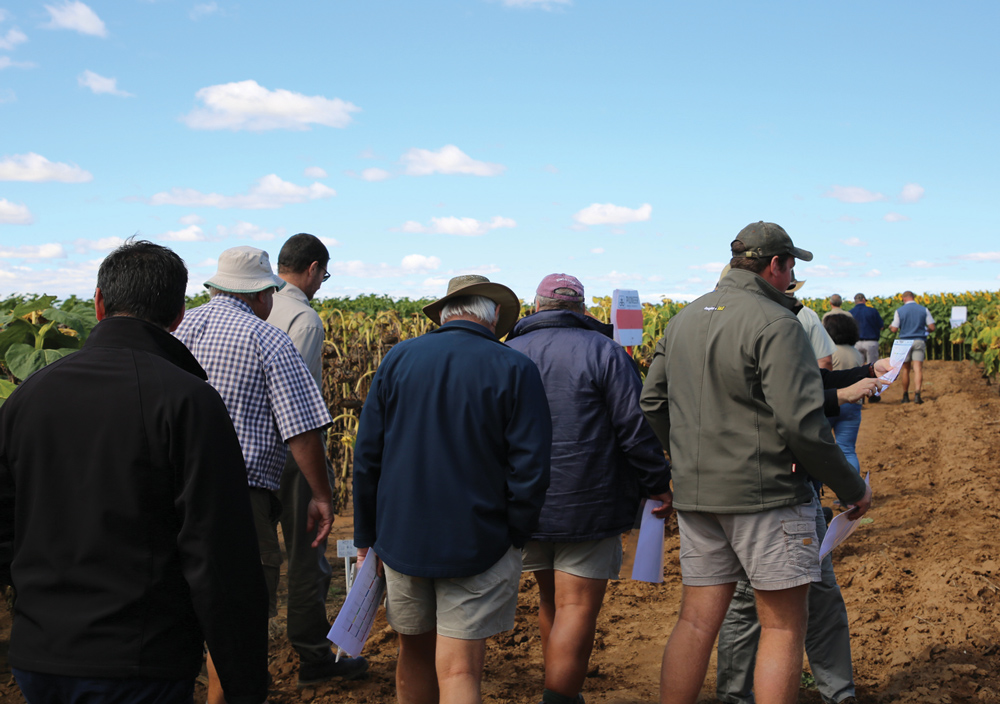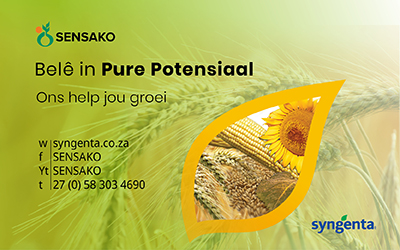
Sunflower is a versatile crop that thrives in various climates and soil types, and which is known for its high yield and adaptability. While sunflowers can withstand moderate drought due to their deep root system, the plants are sensitive to drought and heat stress during the flowering and grain-filling stages.
Environmental factors such as air temperature, day length, solar radiation, and rainfall affect the growth and development of sunflower. Fluctuations in air temperature and moisture availability influence the quantity and quality of oil accumulation in sunflower seeds. High air temperatures during grain filling can reduce seed oil concentration, while delayed grain filling due to later planting dates can also lead to lower oil concentrations. Additionally, drought stress has been shown to reduce seed and oil yield and other essential yield traits in sunflower.
Cultural practices, including land preparation, planting timing, and pest control, significantly affect sunflower productivity. Among these practices, planting date is crucial as it can influence the environmental conditions experienced by the crop during its life cycle, affecting growth, yield, and seed quality.
In South Africa, sunflower is typically planted from November to mid-January, with the Free State and North West being the main cultivation areas. Unpredictable adverse weather conditions during the production season can significantly impact seed yield and oil content.
The aim of this study was to investigate the impact of planting dates on sunflower seed yield, oil content, and oil yield and to recommend optimal planting dates for producers.
Research conducted
A total of 24 field trials were conducted during the 2022 to 2024 growing seasons to determine the effect of planting dates on seed yield, oil content, and oil yield.
Twelve field trials were established at the ARC-Grain Crops’ Potchefstroom research farm in North West, while seven field trials were established at the ARC-Small Grains’ Bethlehem research farm in the eastern Free State and five at Steynsrus (a producer’s field in the northern Free State). The trials at each site had different planting dates, ranging from late October to the end of January. The following hybrids were planted at the three sites: AGSUN 5106 CLP, AGSUN 5270, AGSUN 8251, P 65 LP 65, PAN 7080, PAN 7180 CLP, and SY 3970 CL. Responses were studied in a randomised complete block design with three replications.
Each plot measured 10 m x 4,6 m and comprised six rows at a 0,9-m row spacing for each hybrid. After maturity, two rows with a length of 8 m were harvested by hand to measure the grain yield per plot. Grain yield was measured and corrected at 9% moisture content. Sunflower seed samples were taken from each subplot for oil analysis on an ‘as is’ basis. Statistical analysis was carried out on the available data, including ANOVA and post-hoc tests, to determine significant differences among planting dates and hybrids.

Potchefstroom site (North West)
Significant effects of planting date, year, and sunflower hybrids were observed on seed yield, oil content, and oil yield. During the 2021/2022 and 2022/2023 growing seasons, the precipitation was significantly more than the long term: 850 mm and 890 mm for the first and second growing seasons, respectively. The first planting date yielded the highest seed and oil yields, while delaying the planting resulted in reduced yields and oil content.
In the 2021/2022 growing season, the first planting date of 2 November 2021 yielded the highest seed yield (3,47 t/ha) and oil yield (1,34 t/ha), while the third planting date, 11 January 2022, yielded the highest oil content (42%). Delaying the planting date until 24 January 2022 reduced seed yield, oil yield, and oil content by 33%, 36%, and 3%, respectively.
During the second growing season (2022/2023), the first planting on 31 October 2022 yielded the highest seed yield, while planting on 21 November 2022 produced the highest oil yield and oil content. Delaying the planting until 12 January 2023 resulted in a 35%, 37%, and 4% reduction in seed, oil yield, and oil content, respectively.
In the 2023/2024 growing season, lower precipitation and a heatwave significantly impacted the results. The first planting on 3 November 2023 yielded the highest seed yield, followed by the last planting on 22 January 2024. The 18 December planting date yielded the best oil content. Delaying the planting until 22 January 2024 resulted in a 4%, 10%, and 6% reduction in seed, oil yield, and oil content, respectively. (Graph 1).

Significant differences were observed among the tested sunflower hybrids in seed yield, oil content, and oil yield throughout all three growing seasons. Seed yield ranged from 2,25 t/ha to 2,46 t/ha. Oil content varied from 38% to 46%. Oil yield ranged from 0,85 t/hato 1,16 t/ha. Over the three growing seasons, PAN 7080 exhibited the highest mean seed yield (2,46 t/ha), SY 3970 CL had the highest mean oil content (46%) and the highest mean oil yield (1,16 t/ha).
Bethlehem site (eastern Free State)
Significant effects of planting date, year, and sunflower hybrids were observed on seed yield, oil content, and oil yield. In the 2022/2023 growing season, in which the amount of precipitation was higher than the long-term average (942 mm), the first planting date on 20 November 2022 yielded the best seed and oil yield (2,59 t/ha and 1,10 t/ha), respectively, with oil content of 42,60%. The last planting date in January resulted in the lowest seed and oil yield and higher oil content. The 2023/2024 growing season experienced drought, which led to different outcomes. The third planting date on 20 December 2023 produced the best seed and oil yield of 1,71 t/ha and 0,68 t/ha and the highest oil content of 39,85%. Planting on 28 November 2023 yielded the lowest seed yield, oil yield, and oil content (Graph 2).

Delaying the planting dates until the second week of January reduced the seed yield by 22% and the oil yield by 20% to 30%, depending on the growing season. Oil content increased during the wet growing season and was reduced by 12% during the dry season.
Significant differences were noticed among the tested sunflower hybrids in seed yield, oil content, and oil yield throughout all three growing seasons. PAN 7080 exhibited the highest mean seed yield (1,99 t/ha), SY 3970 CL had the highest mean oil content (48%), and the highest mean oil yield (0,81 t/ha).
Steynsrus (northern Free State)
Significant main effects of planting dates, year, and sunflower hybrids were observed on seed yield, oil content, and oil yield. The 2021/2022 growing season received late and heavy rain, affecting sunflower germination and establishment. The second planting, which was carried out in the first week of January, produced the best seed (2,80 t/ha) and oil yield (1,15 t/ha), while the third planting date on 26 January 2022 yielded the lowest seed and oil yield, but the highest oil content. Delaying the planting till the last week of January reduced the seed yield by 16% and oil yield by 12%, while increasing the oil content by 6%.

The 2023/2024 growing season, characterised as a dry season, also had a significant impact on the results. Planting on 26 October 2023 yielded the best seed yield and oil yield, while the highest oil content was recorded for the second planting on 27 November 2023 (Graph 3).
Tested sunflower hybrids showed significant differences for all studied parameters under different growing conditions. PAN 7180 CLP produced the best seed yield of 2,29 t/ha. SY 3970 CL produced the highest oil content (50%) and best oil yield (1,05 t/ha).

Conclusion
Several factors, including the year, planting date, hybrid selection, and their interactions, had a significant impact on sunflower seed yield, oil content, and oil yield. The optimal period for planting sunflowers in the North West and Free State regions is November to December. Conversely, planting sunflowers in late January is discouraged due to a substantial reduction in seed yield, oil content, and oil yield. Moreover, any further delays in planting exacerbate these reductions.
 Acknowledgements
Acknowledgements
The author thanks the Oil and Protein Seeds Development Trust and the Agricultural Research Council (ARC) for funding this project and the sunflower team at ARC-Grain Crops for their technical assistance.






























